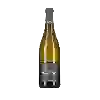
Winery Balma VénitiaPetit Grain des Balmes
In the mouth this white wine is a powerful with a nice freshness.
This wine generally goes well with pork, poultry or rich fish (salmon, tuna etc).
Taste structure of the Petit Grain des Balmes from the Winery Balma Vénitia
Light | Bold | |
Dry | Sweet | |
Soft | Acidic |
In the mouth the Petit Grain des Balmes of Winery Balma Vénitia in the region of Méditerranée is a powerful with a nice freshness.
Food and wine pairings with Petit Grain des Balmes
Pairings that work perfectly with Petit Grain des Balmes
Original food and wine pairings with Petit Grain des Balmes
The Petit Grain des Balmes of Winery Balma Vénitia matches generally quite well with dishes of pork, rich fish (salmon, tuna etc) or mature and hard cheese such as recipes of savoyard pizza (cream base), codfish portuguese style or aveyron truffle.
Details and technical informations about Winery Balma Vénitia's Petit Grain des Balmes.
Discover the grape variety: Narince
This grape variety is native to Turkey, where it is very well known and highly appreciated. In this country, it is very often grown at high altitudes. It is believed to be the result of a natural intraspecific cross between Dimrit Kara and Kalecik Karasi. Almost unknown in France, it is no more so in other wine-producing countries.
Informations about the Winery Balma Vénitia
The Winery Balma Vénitia is one of of the world's great estates. It offers 83 wines for sale in the of Vaucluse to come and discover on site or to buy online.
The wine region of Vaucluse
The wine region of Vaucluse is located in the region of Méditerranée of Vin de Pays of France. Wineries and vineyards like the Domaine Chêne Bleu or the Domaine Chêne Bleu produce mainly wines red, white and pink. The most planted grape varieties in the region of Vaucluse are Viognier, Merlot and Cabernet-Sauvignon, they are then used in wines in blends or as a single variety. On the nose of Vaucluse often reveals types of flavors of earthy, blueberry or dried herbs and sometimes also flavors of savory, anise or cinnamon.
The wine region of Méditerranée
Méditérranée is a PGI title that covers wines produced in a large area of the South-eastern coast of France, roughly corresponding to the wine region of Provence but also including Part of the Rhône Valley. The PGI shares its territory with multiple AOC appellations as varied as Châteauneuf-du-Pape, Bandol and Côtes de Provence. The PGI Méditérranée catchment area extends over 10 departments (including the two on the island of Corsica), as well as smaller parts of the Isère, Loire and Rhône departments. Viticulture is essential to the culture and economy of this part of France.
The word of the wine: Tranquil (wine)
Refers to a non-sparkling wine.














